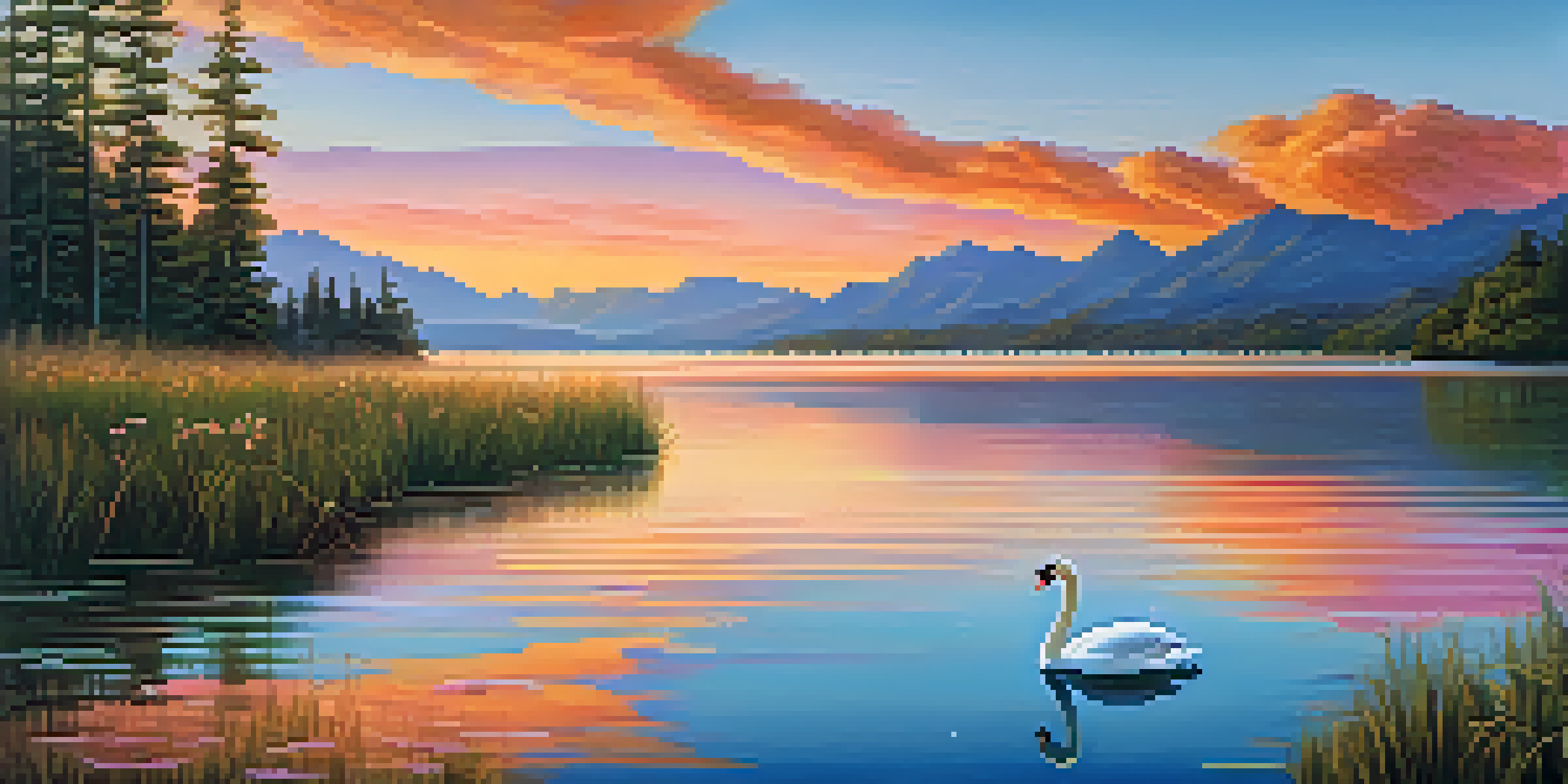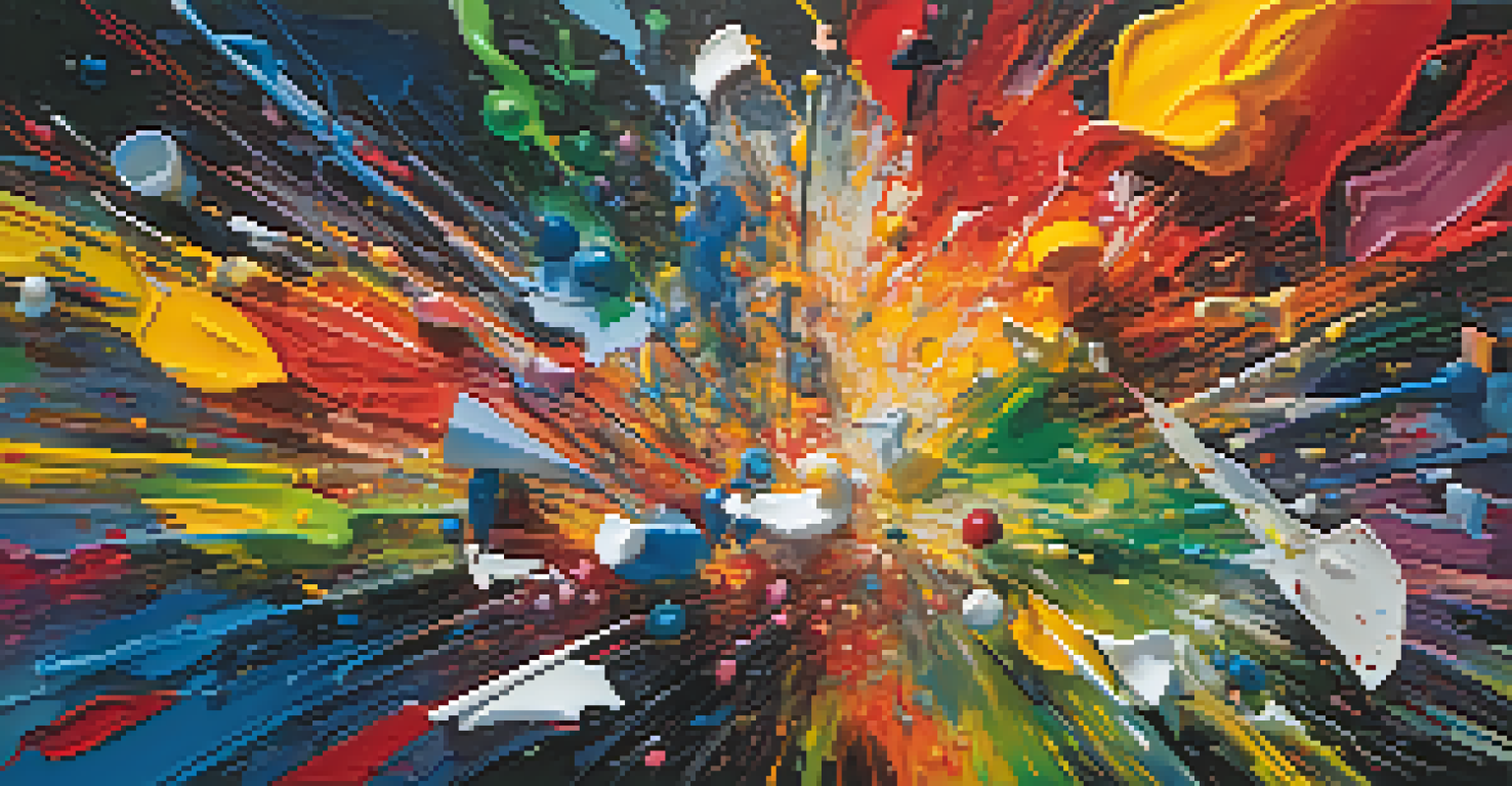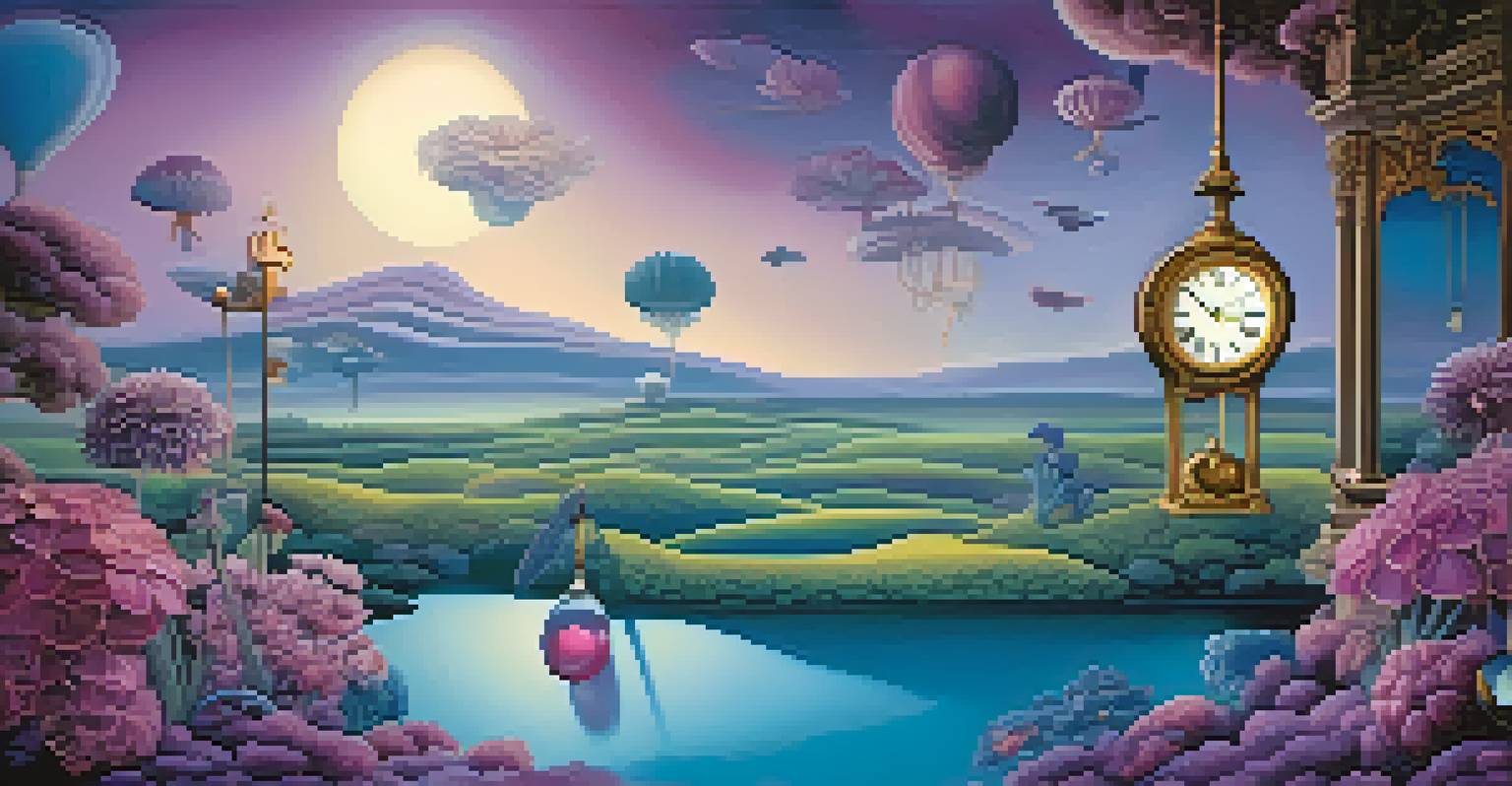Literary Movements That Were Inspired by Visual Art

Romanticism: Blending Emotion and Nature
Romanticism emerged in the late 18th century, emphasizing emotion and the sublime beauty of nature. Writers like William Wordsworth and Samuel Taylor Coleridge drew inspiration from the visual art of the time, which celebrated vivid landscapes and emotional depth. The lush imagery found in paintings influenced poets to convey their feelings about nature, reflecting a shared appreciation for its beauty.
The poet's mission is to make the invisible visible.
This movement often featured themes of individualism and personal experience, paralleling the expressive brushstrokes of romantic painters like Caspar David Friedrich. Just as artists used color and form to evoke feelings, writers crafted their verses to resonate on an emotional level. The imagery within their poems often mirrored the dramatic visuals seen in contemporary artworks.
Through their works, both visual artists and writers sought to communicate profound truths about the human experience. By intertwining their crafts, they created a rich tapestry of artistic expression that continues to inspire today.
Symbolism: The Language of Imagination
Symbolism, which flourished in the late 19th century, was heavily influenced by visual art movements such as Impressionism. Poets like Stéphane Mallarmé and Paul Verlaine sought to evoke emotions and ideas through symbols rather than direct language, much like visual artists used color and light to suggest rather than depict. This shift toward abstraction marked a significant departure from previous literary forms.

Much like Impressionist painters captured fleeting moments through their brushwork, Symbolist poets captured the essence of feelings and thoughts through elusive images and metaphors. The interplay between art and literature during this time invited readers to engage their imaginations and discover personal meanings. This synergy showcased how both mediums could transcend the ordinary and reach deeper truths.
Art and Literature Intertwined
Various artistic movements, like Romanticism and Surrealism, showcase how literature and visual art influence and inspire each other.
The legacy of Symbolism is evident in contemporary literature, where writers continue to explore abstract concepts through symbolic language. The movement's emphasis on imagination and personal interpretation has left a lasting impact on how we view both literature and visual art.
Surrealism: Dreams on the Page
Emerging in the early 20th century, Surrealism was a revolutionary movement that sought to unlock the unconscious mind. Writers like André Breton and Paul Éluard were inspired by the visual art of artists such as Salvador Dalí and René Magritte, who created dream-like images that challenged reality. This cross-pollination of ideas fostered a unique exploration of the absurd and the bizarre in both literature and art.
Art is what you can get away with.
Surrealist writers often employed techniques like automatic writing, where they wrote without conscious thought, similar to how artists would create spontaneous and irrational images. This approach allowed for a raw expression of the subconscious, leading to works that felt both chaotic and beautifully profound. The blending of these two forms created a rich landscape for exploring human psychology.
As a result, Surrealism opened up new avenues for storytelling and artistic expression, inviting audiences to confront their own dreams and realities. The movement's legacy continues to inspire both writers and artists to push the boundaries of creativity.
Dadaism: Art and Literature in Rebellion
Dadaism emerged as a response to the horrors of World War I, characterized by its anti-art stance and absurdity. Writers like Tristan Tzara and Hugo Ball experimented with language and form, paralleling the nonsensical creations of Dada visual artists like Marcel Duchamp. This rejection of traditional aesthetics allowed for a radical rethinking of what art and literature could be.
In Dada poetry, random words and phrases were often juxtaposed to create surprising and provocative meanings, challenging readers to question their perceptions. This playful yet critical approach mirrored the visual arts, where everyday objects were transformed into art pieces, questioning the very nature of art itself. Both mediums sought to disrupt the status quo, inviting audiences to embrace chaos and uncertainty.
Embracing Modernity and Change
Movements such as Futurism and Postmodernism reflect society's evolving relationship with technology and cultural narratives.
The Dada movement's influence can still be seen today in various experimental art forms and literature. By blurring the lines between art and life, Dadaism paved the way for future movements that would continue to challenge conventions.
Futurism: Celebrating Modernity and Speed
Futurism, which began in Italy in the early 20th century, celebrated technology, speed, and modern life. Writers like Filippo Tommaso Marinetti embraced the energy of the machine age, echoing the dynamic compositions of Futurist painters such as Umberto Boccioni. This movement championed a break from the past, urging society to look forward and embrace the rapid changes of the modern world.
Futurist literature often featured fragmented sentences and innovative syntax, reflecting the excitement and chaos of contemporary life. Much like their artistic counterparts, Futurist writers sought to capture motion and energy, using vivid imagery that mirrored the visual art's bold colors and dynamic forms. This synergy between literature and visual art created a powerful commentary on the evolving human experience.
The legacy of Futurism can still be felt in modern literature and art, where the themes of progress and technology continue to resonate. By intertwining their visions, Futurist artists and writers pushed the boundaries of creativity and expression.
Abstract Expressionism: Art that Speaks Volumes
Abstract Expressionism, which gained momentum in the mid-20th century, emphasized spontaneous and emotional expression. Writers like Jack Kerouac and Allen Ginsberg drew inspiration from the visual works of artists such as Jackson Pollock and Mark Rothko, who used bold colors and abstract forms to convey feelings. This movement marked a shift towards a more personal and subjective approach in both literature and art.
Just as Abstract Expressionist painters poured their emotions onto the canvas with bold strokes, writers embraced free verse and stream-of-consciousness techniques to reflect their inner thoughts and feelings. The resulting works were raw and genuine, inviting readers to experience the tumult of the human spirit. This intimate connection between the two forms allowed for a deeper exploration of personal narrative and identity.
Symbolism and Emotional Expression
Literary movements like Symbolism and Abstract Expressionism prioritize personal interpretation and emotional depth in their works.
The influence of Abstract Expressionism is evident in contemporary literary styles that prioritize emotional truth and authenticity. By breaking from traditional forms, both writers and artists have created a lasting impact on the creative landscape.
Postmodernism: Blurring the Boundaries
Postmodernism emerged in the late 20th century, characterized by skepticism towards grand narratives and an embrace of irony. Writers like Thomas Pynchon and Don DeLillo found inspiration in visual artists such as Andy Warhol and Roy Lichtenstein, who challenged the conventions of art and culture. This movement encouraged a playful interaction between different media, breaking down the barriers between literature and visual art.
Postmodern literature often features intertextuality, pastiche, and metafiction, mirroring the techniques used in contemporary visual art. Just as Warhol's works questioned the nature of originality and consumerism, postmodern writers deconstructed traditional storytelling methods to explore the complexities of modern life. This blending of ideas fosters a rich dialogue between literature and art, inviting audiences to engage with both.

The legacy of Postmodernism continues to shape contemporary art and literature, where boundaries are increasingly blurred. By embracing ambiguity and multiplicity, both writers and artists encourage a diverse exploration of meaning, reflecting the complexities of our world.